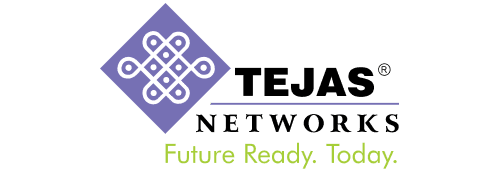Legacy systems in businesses are outdated and difficult to manage. They cannot be integrated with new platforms, leading to isolated and incompatible data processing systems. While legacy systems can still be vital to workflow processes, they often pose challenges such as high maintenance costs, outdated hardware, and cybersecurity risks. Many companies continue to use legacy systems due to investment in maintenance and fear of change. However, it is crucial to acknowledge their limitations and consider upgrading or integrating systems to meet evolving business needs.
Legacy systems pose significant challenges, hindering adaptability and growth. These ageing infrastructures struggle with integration, impeding collaboration and efficiency in modern, interconnected environments. The hefty maintenance costs of outdated hardware and software strain budgets, diverting funds from strategic initiatives. Cybersecurity risks further compound the urgency, as legacy systems often lack the defences needed in the face of modern threats.
While the reluctance to part with legacy systems is understandable, the imperative for change is clear. The substantial investments in maintenance and the fear of disruptions must be weighed against the risks of staying stagnant. Embracing modern technologies is not just about staying current; it’s an investment in organisational resilience and sustainability. The journey toward modernization is a strategic imperative, unlocking new possibilities and positioning businesses for future growth in an ever-evolving technological landscape.
Understanding Integrated Solutions
Integrated solutions refer to the seamless flow of data and connectivity across different departments or systems within an organisation. They help resolve the limitations of legacy systems by enabling efficient data sharing and collaboration. Integrated solutions facilitate enhanced productivity, efficiency, and decision-making by providing a consolidated view of business operations. By eliminating data silos and improving connectivity, integrated solutions streamline processes and enable better insights for informed decision-making.
Integrated solutions play a pivotal role in addressing the limitations inherent in legacy systems. Legacy systems often lack interoperability and struggle with data silos, making them inefficient and prone to bottlenecks. By implementing integrated solutions, organisations can overcome these limitations, fostering a more dynamic and responsive digital environment.
In essence, integrated solutions serve as the backbone of a modern and efficient organisational infrastructure. They bridge the gaps between disparate systems, foster collaboration, and propel organisations toward a more agile, data-driven future. By embracing integrated solutions, businesses can not only resolve the limitations of legacy systems but also unlock new levels of productivity, efficiency, and strategic decision-making.
Common Challenges with Legacy Systems
Legacy systems present multifaceted challenges that organisations must navigate. Outdated technology stands out as a critical hurdle, with legacy systems often running on obsolete software and hardware. This not only complicates maintenance but also inhibits the integration of modern technologies and features. Siloed data is a pervasive issue, where information is compartmentalised across different systems, hindering a unified view of organisational data and impeding collaboration. Security risks are heightened due to outdated security protocols, lack of vendor support, and the increased susceptibility to cyber threats. Scalability becomes a challenge as legacy systems struggle to adapt to the evolving needs of businesses, impeding growth and flexibility.
Impact on Daily Operations, Innovation, and Customer Experiences
The ramifications of legacy systems on daily operations are substantial. Cumbersome processes and inefficient workflows slow down operations, affecting overall organisational efficiency. Innovation takes a hit as legacy systems hinder the integration of emerging technologies, making it challenging to implement advanced solutions and stay competitive. Customer experiences suffer from limited functionality, slow response times, and an inability to meet the dynamic expectations of modern consumers. The lack of agility in adapting to changing market conditions further impacts the ability to deliver seamless and personalised customer interactions.
Advantages of Integrated Solutions in Overcoming Legacy System Challenges
Improved Operational Efficiency
Integrated solutions enable organisations to streamline operations by connecting disparate systems and automating workflows. This results in reduced manual efforts, minimised errors, and faster task execution, contributing to overall improved operational efficiency.
Streamlined Processes
The integration of various systems ensures a seamless flow of information across departments, breaking down data silos and eliminating bottlenecks. This streamlined process enhances collaboration, accelerates task completion, and promotes a more agile and responsive organisational structure.
Enhanced Data Analytics
Integrated solutions provide a unified and real-time view of organisational data. This facilitates more accurate and comprehensive data analytics, empowering organisations to derive meaningful insights. Improved data analytics contribute to informed decision-making and the ability to identify trends, patterns, and opportunities for growth.
Cost-Effectiveness
Adopting integrated solutions can lead to cost savings in various ways. By reducing manual efforts and automating processes, organisations minimise labour costs. Additionally, streamlined operations and improved efficiency contribute to resource optimization, making integrated solutions a cost-effective choice for organisations aiming to maximise their return on investment.
Better Decision-Making and Strategic Planning
Integrated solutions play a crucial role in facilitating better decision-making and strategic planning. Access to real-time and accurate data allows decision-makers to make informed choices promptly. This proactive decision-making, in turn, contributes to strategic planning by aligning organisational goals with market trends and ensuring a more adaptive and forward-thinking approach.
Strategies for Implementing Integrated Solutions
Comprehensive Assessment
Begin with an in-depth assessment of legacy systems, identifying business needs, pain points, and future goals. Consider best practices for data migration, ensuring the integrity and security of critical data during the transition.
Develop a Clear Roadmap
Craft a roadmap outlining the integration process, incorporating best practices for system interoperability. Define clear timelines, milestones, and KPIs to gauge success, with a focus on creating a seamless flow of data across systems.
Data Migration Planning
Prioritise data migration best practices, including a thorough understanding of data structures, cleansing, and validation. Implement protocols to ensure a smooth transfer of data from legacy systems to the integrated solutions, minimising disruptions.
System Interoperability
Emphasise best practices for system interoperability, aiming for seamless communication and data flow between existing systems and integrated solutions. Mitigate data silos to optimise efficiency and enhance overall system cohesion.
Change Management
Address change management through best practices such as clear communication, involvement of key stakeholders, and comprehensive training programs. Acknowledge and alleviate employee concerns, ensuring a smooth cultural transition to the integrated solutions.
Pilot Programs
Implement pilot programs to test the integrated solutions on a smaller scale, adhering to best practices for continuous improvement. Gather real-time feedback, identify potential issues, and refine integration strategies based on practical insights before full-scale deployment.
Continuous Monitoring and Optimization
Establish best practices for continuous monitoring post-implementation. Regularly optimise processes based on performance metrics, ensuring that integrated solutions align with evolving business needs and maintain optimal efficiency.
Conclusion
In conclusion, the transition from legacy systems to integrated solutions is imperative for organisations seeking operational excellence and future-proofing against evolving business landscapes. Embracing integrated solutions offers a myriad of benefits, including improved operational efficiency, streamlined processes, enhanced data analytics, and cost-effectiveness. By overcoming the challenges posed by legacy systems, businesses can achieve a seamless flow of information, foster collaboration, and empower decision-makers with real-time insights.
The importance of this transition cannot be overstated in the context of sustaining growth and competitiveness. Integrated solutions not only address the limitations of outdated technology and siloed data but also position businesses to adapt to emerging technologies and market trends. The scalability and adaptability inherent in integrated solutions ensure that organisations remain agile, responsive, and well-prepared for future challenges.
As businesses navigate an increasingly dynamic and digital landscape, it is crucial to prioritise and invest in the modernization of systems. This proactive approach not only optimises current operations but also lays the foundation for innovation, resilience, and sustained growth.












